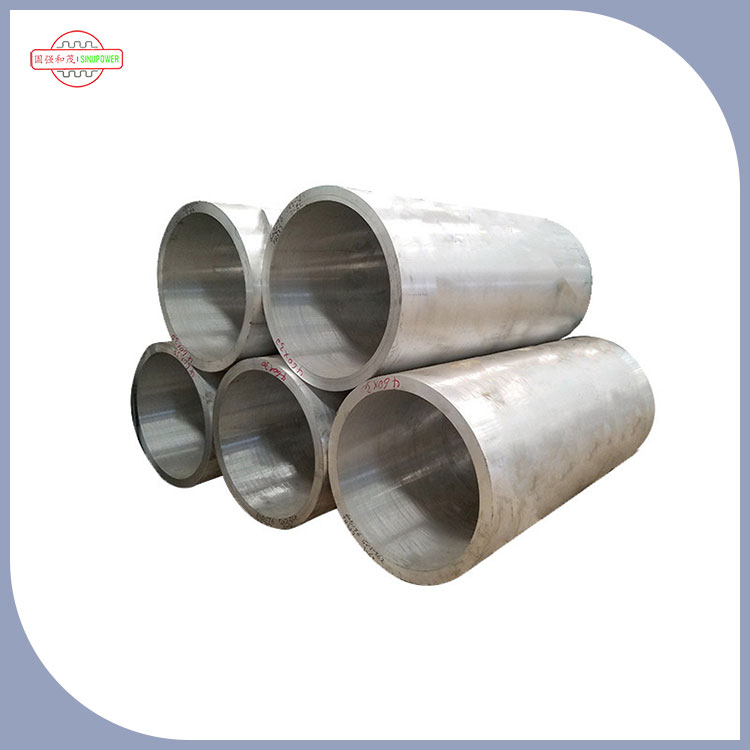
In extreme environments, Automatic Condenser Evaporator Header Pipes are subject to a range of challenges such as:
To address these challenges, regular inspection, maintenance, and cleaning of Automatic Condenser Evaporator Header Pipes is essential. Measures such as using the right cleaning chemicals, ensuring proper drainage of condensate, and preventing debris buildup can help improve the performance and longevity of these pipes. Additionally, using high-quality materials and designs that can withstand extreme environments can also help prevent common challenges associated with maintaining these pipes.
Maintaining Automatic Condenser Evaporator Header Pipes can help ensure optimal performance of air conditioning systems. This can help reduce energy consumption, improve indoor air quality, and extend the life of the system. Additionally, regular maintenance can help prevent costly repairs and downtime, improving the overall efficiency and reliability of air conditioning systems.
In conclusion, maintaining Automatic Condenser Evaporator Header Pipes is an essential aspect of ensuring the proper functioning of air conditioning systems in extreme environments. To address common challenges such as corrosion, cracks, and blockages, regular inspection, cleaning, and maintenance is critical. By doing so, you can improve system performance, reduce costs, and extend the lifespan of your air conditioning system.
Sinupower Heat Transfer Tubes Changshu Ltd. is a leading manufacturer of heat exchanger tubes and heat transfer products used in a wide range of industries, including HVAC, refrigeration, power generation, and more. Our products are designed and manufactured to the highest standards, ensuring optimal performance and reliability. For more information about our company and products, please visit our website https://www.sinupower-transfertubes.com or contact us at robert.gao@sinupower.com.
1. Chakraborty, P., Ghosh, A., & Sharma, K. K. (2015). Insulation design optimization of a field-assembled condenser header. International Journal of Energy Research, 39(14), 1911-1926.
2. Semiz, L., & Bulut, H. (2018). Design optimization of a new compact header and channel size for economizer. Applied Thermal Engineering, 136, 498-505.
3. Tang, X., Zhang, H., Zhang, W., & Wang, Y. (2018). Numerical simulation and optimization of tube arrangement for fin and tube heat exchanger with large temperature difference. Applied Thermal Engineering, 142, 268-280.
4. Tong, Q., Bi, Z., & Huang, X. (2018). Numerical simulation and optimization of shell-side water flow distribution of tio2-water nanofluid flow boiling in a horizontal shell-and-tube condenser. Applied Thermal Engineering, 140, 723-733.
5. Qi, Z., Zhang, R., Wang, M., & Zhang, W. (2019). Multi-objective optimization of a novel low-temperature mixed-refrigerant process for natural gas liquefaction. Chemical Engineering Research and Design, 144, 438-452.
6. Li, F. H., Luo, S. X., Zheng, H. Y., Du, J., Qiu, Y. H., & Wang, X. L. (2018). Development of enabling technologies and computational methods for the research on nuclear safety related multi-physics problems. Progress in Nuclear Energy, 109, 77-91.
7. Blanco-Marigorta, A. M., Santana, D., & González-Quijano, M. (2018). Numerical analysis of the heat transfer and friction factors in a microchannel heat exchanger. International Journal of Heat and Mass Transfer, 118, 1056-1065.
8. Ashworth, M., Chmielus, M., & Royston, T. (2015). Analysis of copper (i) oxide films and deposition parameters via electrochemical impedance spectroscopy in order to optimize copper thin film temperature coefficient of resistance. Journal of Electroanalytical Chemistry, 756, 21-29.
9. Li, Y., Li, C., & Zhang, K. (2019). A computational investigation on the performance of a novel intermediate temperature solid oxide fuel cell-fuel gas turbine hybrid power generation system. Energy Conversion and Management, 191, 446-463.
10. Ma, J., Liu, Y., Sun, J., & Qian, Y. (2019). Experimental study of hydrocarbon contaminant effect on R410A flow boiling heat transfer in a 14.5 mm outer diameter horizontal smooth tube. International Journal of Refrigeration, 97, 125-136.